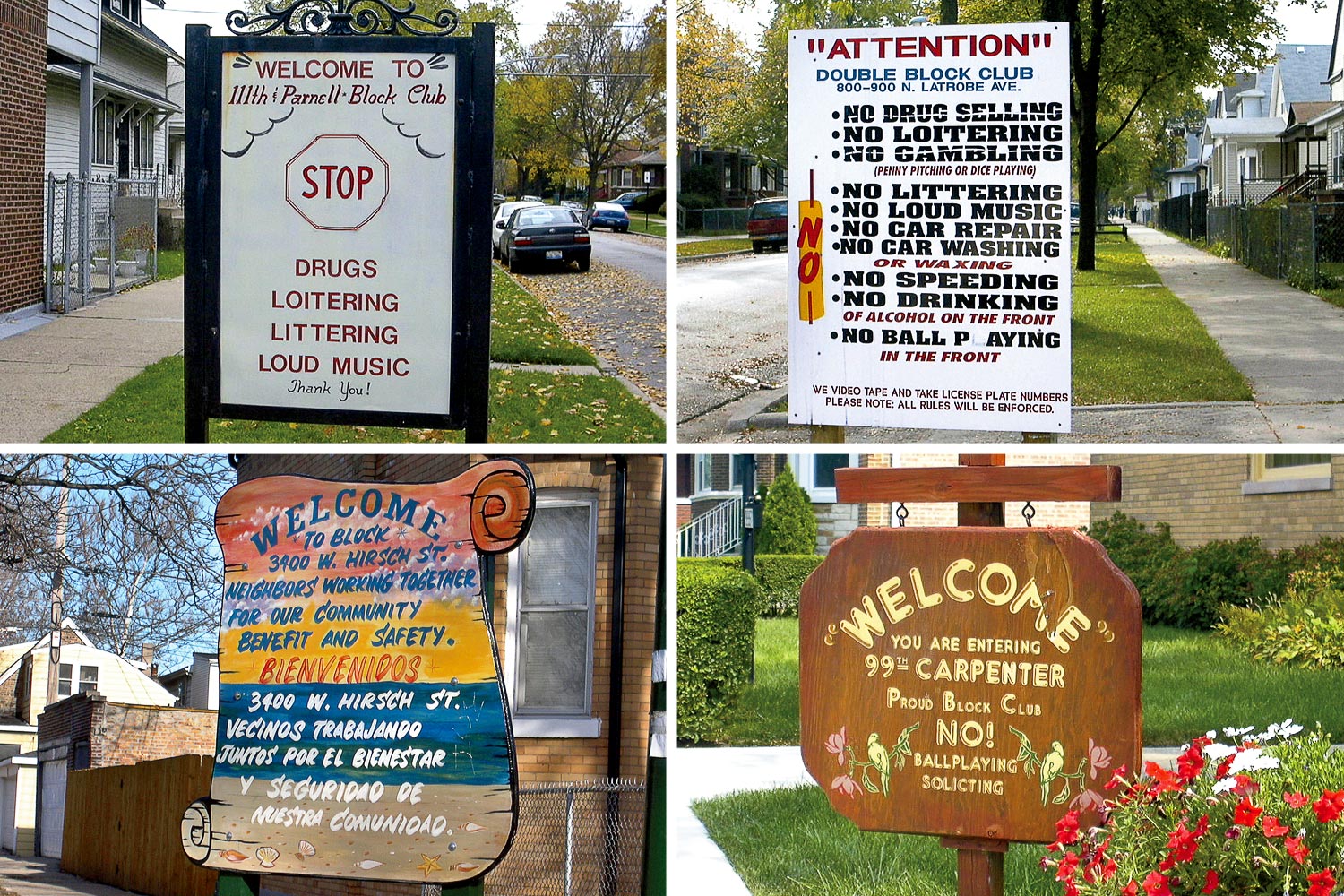1 Block clubs started in Chicago as a way of helping southern blacks acclimate.
The Chicago Urban League created them in the early 1900s during the Great Migration. As part of the effort, longtime black residents tried to help the newly relocated avoid racial stereotyping by posting signs such as “Don’t Lean Off the Porch” and “Don’t Eat Watermelon in Public,” says Amanda Seligman, a University of Wisconsin-Milwaukee professor and author of Chicago’s Block Clubs: How Neighbors Shape the City, out September 12 from University of Chicago Press.
2 World War II fueled their proliferation.
The approach worked well enough that Mayor Edward Kelly coordinated with the federal government to organize every block in the metro area—20,000 clubs in all—to pump up patriotism, plant victory gardens, and prep neighborhoods for air raids.
3 Police are the second-biggest organizers. (The feds are still No. 1.)
Until the ’90s, the Chicago Police Department had little interest in neighborhood nuisances that weren’t actually criminal. That changed when The Atlantic ran an article about the “broken windows” theory. “[It] called for a reorientation of policing from cops responding to 911 to walking the beat and getting to know people in neighborhoods,” Seligman says. From that, the Chicago Alternative Policing Strategy—better known as CAPS—was born.
4 Chicago’s longest-standing block club is in Uptown.
Residents founded the Winona Foster Carmen Winnemac Block Club (say that three times fast) more than 50 years ago. Clubs tend to peter out within a few years, but this one persists because it’s so big—700-plus members—which makes finding successors easier when leaders step down.




Comments are closed.